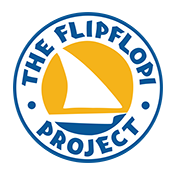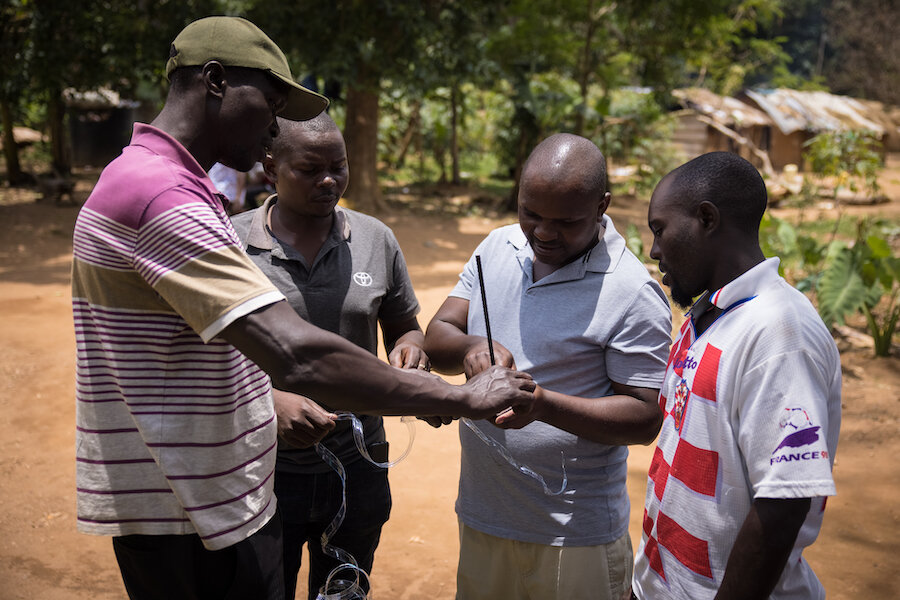From Local to Global - How Bulago Island, Lake Victoria is Fighting Plastic Pollution
Written by Hannah Evans
Local fishermen on Bulago island | © Niall Redfern
Bulago Island a part of the Koome Archipelago, not far from the coast of Entebbe is one of several scenic rocky islands emerging from Lake Victoria. Covering 500 acres with beaches, rocky outcrops and sunrise to sunset views, Bulago Island was a world away from the hustle and bustle we were about to experience in Ggaba Beach.
With this in mind, we were happy to accept the invitation from One Minute South - a unique event destination on the island where we were able to rest our weary heads for a few nights.
But it wasn’t all lazing around on Bulago. We were there for a much more important reason: to meet an exciting new initiative - Kuokoa who are working to implement the first protected area in Lake Victoria.
Map of the LPA courtesy of Kuokoa
Who Are Kuokoa
This young NGO was set up by mother and daughter - Ali and Phoebe - from a deep love and respect for Uganda and her wildlife. They were driven to do something to protect the rich biodiversity of Uganda’s largest fishery - Lake Victoria - and Kuokoa was born.
Kuokoa works within the Lacustrine Protected Area (LPA) to improve the wellbeing of the community and their surrounding environment. The LPA is to be used as a long term tool, that can also be replicated, to stabilise Uganda’s largest and most important fishery.
Through a mix of capacity building, education, awareness and advocacy for better management of fisheries, Kuokoa are improving fishing practices, waste management and livelihoods within the LPA.
They do this by supporting local grassroots organisations and projects within the LPA to achieve their goal of a sustainable transition to a more prosperous local economy while still allowing people to continue with their traditional ways of life.
Reaching Small Communities on Bulago
Kuokoa are actively working with a small fishing community that resides on Bulago Island - Kaunguli Village. To welcome the Flipflopi to the island, this 100 strong village came together to welcome us and learn more about the plastic revolution.
The community are already working to clean their environment. Their chief proudly told us that they perform weekly cleanups through the town and on the beaches to keep the area clean. However, they were unaware of how these small actions can benefit the world at large.
Since the beginning of our Lake Victoria expedition we’ve been sharing the idea of ‘taking the message upstream’. Meaning, that to prevent plastic pollution we must stem the flow from further upstream.
This comes at an important time, as a recent study found that over 80% of ocean plastic waste comes from 1000 rivers across the world. As Lake Victoria sits at the source of the Nile - one of the largest river plastic polluters - it’s important we share this message to prevent more plastics from ending up in our oceans.
Katharina demonstrating how to create fabric from kavera | © UMBER Studio + Flipflopi
Demonstrating Plastic Recycling
For this part of the event, we had our plastic expert - Katharina - on hand to lead demonstrations as to how the community can begin small-scale recycling themselves. 40 people came to the demonstrations that began with a small clean up while walking to the Flipflopi dhow where Katharina explained how the dhow was made.
The importance of properly sorting plastic waste was emphasised. Not only because plastics and waste are worth more money sorted, but also because of the difference it makes to the recycling process.
When building the Flipflopi, we learnt this ourselves - the hard way. The very first prototypes for the Flipflopi were made from a mix of plastics. But due to the different melting points of the plastics, these pieces weren’t strong enough to withstand the stress of sailing across the seas - these rejects can still be seen at Captain Ali’s workshop!
Katharina went on to show recycled plastic examples from across the world to show the community how endless the possibilities of recycling plastic are. Finally, Katharina gave demonstrations of the recycling processes that the community could do for themselves.
First Katharina demoed how a bottle cutter can be used to make ‘string’ from plastic bottles. This durable material can be used in so many ways including in fencing and for making ropes. Secondly, she demoed how you can make ‘fabric’ from kavera (plastic bags) using an iron. A small group of villagers went away and made a small pouch from this process.
These kind of small scale recycling processes are so important as they both use materials that are the largest polluters in Uganda and they demonstrate how valuable plastics can be with basic technology that is easily accessible. Despite being banned in 2017, kavera are still openly used across Uganda. These bags are used for an average of 20 minutes and then disposed of. But due to the lack of waste management infrastructure, their disposal is not managed so they can often be seen lining streets throughout Uganda.
Community members using the bottle cutter to make PET string | © UMBER Studio + Flipflopi
Meeting the Members of BIC
We were lucky enough to meet members of the community group BIC. This group is supported by Kuokoa and works to clean up their local environment.
These activists began their work after seeing the harm that discarded plastic was doing to their environment and how kavera were affecting the germination of trees in the forest and weakening trees.
Today the group collect PET bottles and kavera from around the island. The bottles are collected and stored into large tanks to be taken to the mainland where they can be sold - thus creating a small scale circular economy.
It’s meeting inspiring groups like these that saw a problem and actively worked to find a solution that gives us the energy to keep on going. After all, everyone can do their part to protect their environment.
One of the highlights of our expeditions is meeting communities like these. Meeting passionate environmentalists that have seen the harm being done to their environment firsthand and then done something about it is truly the fuel to the plastic revolution fire.
Bottom-up initiatives can truly work to create a lasting change and impact to protect the environment. These are the people we’re always so humbled to meet and proud to share their work.
For more insight about life on Bulago and on Lake Victoria, check out this wonderful online photograph exhibit from Niall Readfern here.
If you'd like to stay up to date with Flipflopi events, milestones and achievements hit the button below to join our non-spammy mailing list!




